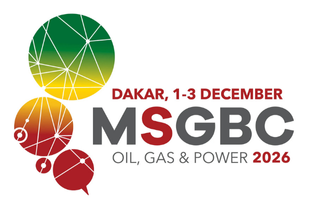Inside Senegal’s LNG Transformation
)
The GTA project marks Senegal’s formal entry into the global LNG market, opening the door to critical infrastructure developments aimed at strengthening energy security and supporting industrial growth.
Developing LNG Infrastructure
According to Senegalese President Bassirou Diomaye Faye, by 2027, 20–25% of the liquefied natural gas produced from GTA Phase 1 could be allocated to the domestic market, leading to a permanent reduction in energy prices. Although domestic gas from the GTA project is not yet available, national utility Senelec has signed an agreement with petroleum distributor Elton Oil Company for the supply of LNG to fuel power plants that are under construction or being converted.
Ongoing projects include the conversion of the 335 MW heavy‑fuel Bel Air plant into a dual‑fuel LNG unit. As part of the multi-phase project, Phase 1 has upgraded the engines and Phase 2, set to finish by end‑2025, will complete the switch to LNG as the main fuel. The project is Senegal’s first-ever power plant conversion to LNG, paving the way for using domestically‑sourced gas from GTA instead of costly imported oil.
Alternatively, Senelec has adopted innovative solutions to ensure energy security. In July 2025, Senelec’s floating storage and regasification unit (FSRU), LNGT Africa, supplied regasified LNG to a powership from Karpowership’s fleet. The combination of FSRUs and powerships offers a groundbreaking solution for introducing LNG-based power generation in countries without natural gas infrastructure or supply.
LNG Benefits for Senegal
Once Senegal switches from heavy fuel oil (HFO) to domestically sourced LNG, operating costs for power generation are expected to fall. Currently, HFO generation costs can reach up to 38 cents kWh. By contrast, LNG offers not only lower fuel prices but also improved plant efficiency and reduced maintenance. Global benchmarks show that gas-fired plants can reduce generation costs compared to oil-based systems, particularly when using local supply.
Senegal’s energy sector accounts for about 30% of national greenhouse gas emissions, with the power sector alone contributing roughly 17%. Switching from HFO to natural gas reduces CO2 emissions by 50%–60% per kWh, while also eliminating sulphur dioxide and fine particulate matter. This shift aligns with Senegal’s climate targets, including a 40% renewable share by 2030, by positioning LNG as a transitional fuel.
Moreover, reliable and affordable electricity is also a key enabler for industry. The Senegalese government has pledged to accelerate development of its mining and agriculture sectors, including fertilizer production and agropoles in regions like Casamance and Saint-Louis. These industries depend on stable, round-the-clock power, which domestic LNG can help provide. For example, Senegal plans to produce 100,000 tons of urea per year from GTA, cutting fertilizer imports and supporting food security.
By ensuring a steady power supply, LNG supports both industrialization and long-term energy security. These opportunities will take center stage at MSGBC Oil, Gas & Power 2025, taking place in Dakar from December 9–10, with a pre-conference day on December 8, spotlighting gas monetization, infrastructure and industrial growth strategies across the region.
Explore opportunities, foster partnerships and stay at the forefront of the MSGBC region’s oil, gas and power sector. Visit www.msgbcoilgasandpower.com to secure your spot at the MSGBC Oil, Gas & Power 2025 conference and exhibition. For sponsorship or delegate participation, please contact sales@energycapitalpower.com.

